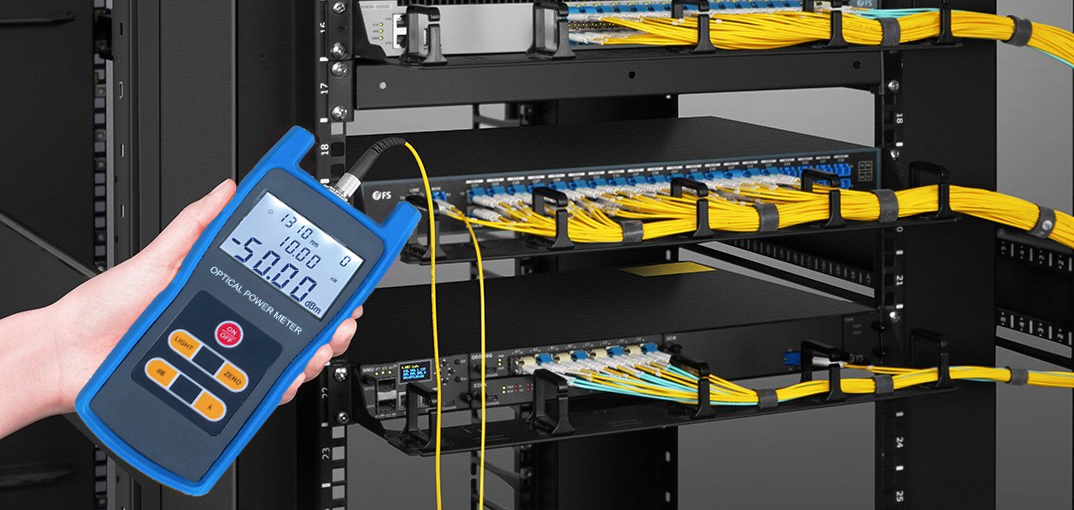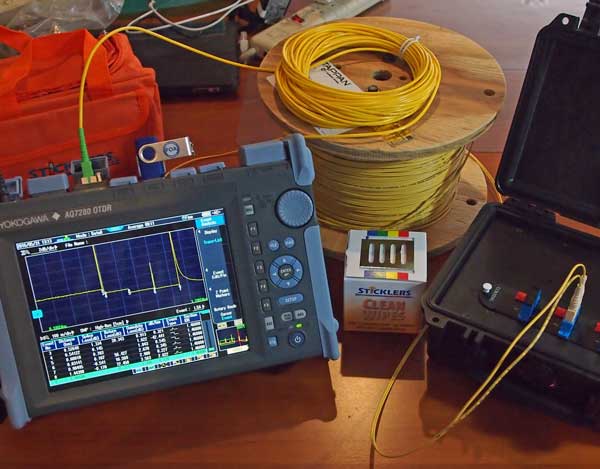Professionals work with optical fibre testing equipment to maintain stable data transmission.
The Role of Optical Fibre Screening in Ensuring High Quality and Performance in Connectivity Solutions
In today's rapidly developing electronic landscape, the significance of optical fibre screening can not be overemphasized, as it serves as a keystone for guaranteeing the quality and performance of connectivity remedies. As innovation proceeds to development, the future of optical fiber testing positions intriguing challenges and opportunities that merit closer examination.
Value of Optical Fiber Testing
The relevance of optical fiber testing can not be overemphasized in making sure the honesty and performance of communication networks. As the foundation of modern telecommunications, optical fibres help with high-speed information transmission, making their dependability important to functional success. Examining works as a positive action to determine potential concerns such as signal loss, depletion, and physical damage, which can compromise network performance.
Normal testing enables the verification of installment high quality and the detection of issues that could affect data honesty - robotic vision. By employing strenuous testing methods, network operators can alleviate the risks connected with network failings, consisting of downtime and financial losses. Optical fibre testing makes sure conformity with industry criteria and policies, boosting the general high quality of solution offered to end-users.
Eventually, the methodical analysis of optical fibres adds to the durability and efficiency of communication systems. It makes it possible for stakeholders to make educated choices concerning maintenance, upgrades, and troubleshooting. In a landscape where data is progressively vital, focusing on optical fibre testing is important to maintaining durable and reliable connection remedies, thus sustaining the demands of modern electronic atmospheres.
Kinds Of Optical Fiber Tests
Various testing approaches are used to make certain the capability and reliability of optical fibers within interaction networks. These tests can be broadly classified into two major kinds: installation tests and maintenance tests.
Installation examinations are performed promptly after the installment of optical fibre cable televisions to validate their performance and honesty - optical fibre diameter analyser. The most common setup examinations include Optical Time-Domain Reflectometry (OTDR) tests, which evaluate the quality of the fiber by determining mistakes or breaks, and end-to-end loss tests, which measure the total optical loss from one end of the fibre to the other
Maintenance tests, on the other hand, are done regularly to make certain ongoing performance and identify prospective issues with time. These consist of visual examination, which look for physical damages or improper installations, and connection examinations, which verify that the signal can pass through the fibre without interruption.
Furthermore, progressed tests such as Polarization Setting Diffusion (PMD) and Chromatic Dispersion (CD) examinations can be carried out to evaluate the fiber's performance under different problems. By employing these diverse screening techniques, specialists can keep high criteria of quality and dependability in optical fiber networks.
Benefits of Regular Checking
Routine testing of optical fibers plays a crucial function in preserving the general performance and integrity of communication networks. By carrying out routine analyses, companies can guarantee that their fibre optic setups meet industry requirements and run successfully. This aggressive approach helps to recognize prospective weaknesses and deterioration over time, permitting timely interventions before problems escalate.

Cost-effectiveness is one more benefit. By attending to small issues early, organizations can avoid the high prices linked with major repair work or system failings. Regular screening additionally cultivates compliance with governing requirements, guaranteeing that the network sticks to needed safety and performance criteria.
Usual Issues Determined
Determining common problems in optical fiber networks is important for preserving ideal performance and integrity. Different elements can add to interruptions, consisting of physical damages, poor installment methods, and environmental influences.
Physical damage, such as bends, breaks, or abrasions, can considerably break down signal high quality. Incorrect installation strategies, consisting of extreme stress or poor securing of cables, might cause raised attenuation and loss of connectivity. Furthermore, ecological elements such as temperature level changes, moisture ingress, and rodent disturbance can endanger the integrity of the fibre.
Connector problems likewise regularly arise, with incorrect placement or contamination resulting in boosted insertion loss. Moreover, splicing mistakes can present significant signal degradation otherwise carried out with accuracy.

Dealing with these typical issues through regular optical fiber testing not just boosts network integrity however likewise optimizes general efficiency, guaranteeing that connectivity options remain robust and effective.
Future Trends in Evaluating
As the need for high-speed connection remains to increase, the future of optical fibre screening will increasingly concentrate on automation and advanced analytics. The integration of expert system (AI) and maker discovering (ML) in screening processes will certainly make it possible for a lot more efficient data evaluation and predictive upkeep, minimizing downtime and enhancing general network integrity. Automated testing solutions will enhance the inspection and qualification of fiber networks, minimizing human error and boosting screening throughput.
An additional significant pattern is the adoption of remote screening modern technologies. As the implementation of fibre networks broadens right into remote and underserved her comment is here areas, remote screening capacities will allow specialists to check and diagnose network conditions without physical presence, consequently minimizing functional prices and boosting reaction times.
Moreover, there will be a change in the direction of more extensive testing standards that include not just standard loss dimensions yet additionally performance metrics such as latency and data transfer use. This all natural approach will assist go to website in better network management and optimization methods.
As these trends develop, the optical fibre screening landscape will certainly not only improve the top quality and performance of connectivity remedies yet likewise sustain the growing complexities of modern communication networks.
Final Thought
In conclusion, optical fibre testing serves as a basic part in keeping the honesty and effectiveness of communication networks. The ongoing commitment to regular screening not only enhances information transmission but also lines up with sector criteria, promoting reliability in network frameworks.